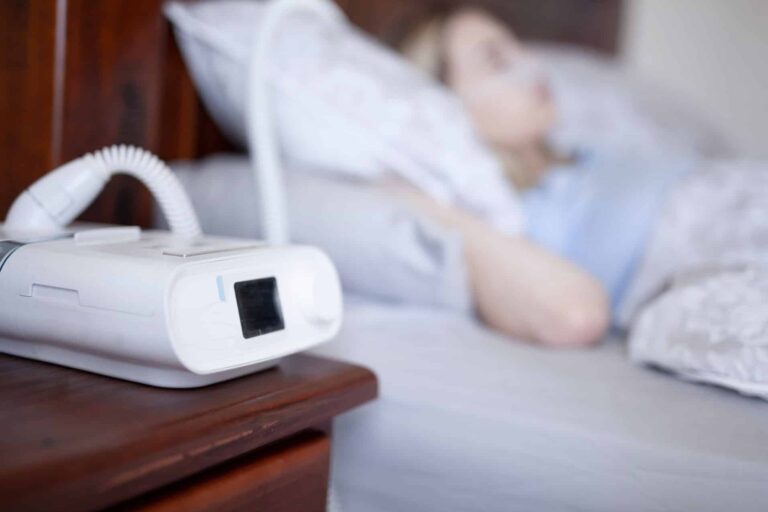Step-by-Step Guide to Conducting a Sleep Apnea Test at Home in Australia
Sleep apnea is a serious sleep disorder that can significantly impact your health and quality of life. Conducting a sleep apnea test at home can be a convenient and effective way to diagnose this condition. This guide will walk you through the process of conducting a sleep apnea test at home in Australia, from preparation to interpreting the results.
Understanding Sleep Apnea and Home Testing
Sleep apnea is characterized by frequent interruptions in breathing during sleep. These interruptions can lead to poor sleep quality and a range of health issues, including cardiovascular problems and daytime fatigue.
A sleep apnea test at home in Australia provides a convenient alternative to in-lab sleep studies. This method allows individuals to monitor their sleep patterns and breathing from the comfort of their own homes. If you suspect you have sleep apnea, this test can offer valuable insights and help in managing your condition effectively.
Preparing for Your Home Sleep Apnea Test
Before starting the test, it’s important to prepare adequately to ensure accurate results. Here’s what you need to do:
Consult with a Healthcare Professional
Consult with your doctor or a sleep specialist to determine if a home sleep apnea test is appropriate for you. They can provide guidance on whether this type of test is suitable for your symptoms and health condition.
Choose the Right Home Sleep Apnea Test
Select a reliable home sleep apnea testing device. There are various types available, including portable monitors that track your breathing patterns, heart rate, and blood oxygen levels. Your healthcare provider can recommend a suitable device based on your needs.
Follow Pre-Test Instructions
Follow any pre-test instructions provided by your healthcare provider or the manufacturer of the testing device. This may include avoiding alcohol, caffeine, or certain medications that can affect your sleep.
Setting Up the Sleep Apnea Test Device
Proper setup of the testing device is crucial for accurate results. Here’s a step-by-step guide to setting up your home sleep apnea test:
Read the Device Manual
Thoroughly read the instruction manual that comes with your sleep apnea testing device. Understanding how to operate the device correctly is essential for obtaining reliable data.
Attach Sensors and Monitors
Follow the instructions to attach the sensors and monitors to your body. Typically, these sensors include a nasal cannula or airflow sensor, a pulse oximeter for monitoring oxygen levels, and a belt to measure chest movements.
Ensure Proper Fit
Ensure that all sensors and monitors are securely attached and comfortably fitted. Improper placement can affect the accuracy of the test results. Make sure the device is positioned correctly according to the manufacturer’s guidelines.
Conducting the Test
Once your device is set up, it’s time to conduct the test. Here’s how to proceed:
Go to Bed at Your Regular Time
Go to sleep at your usual bedtime to ensure the test reflects your normal sleep patterns. Avoid any disruptions to your sleep routine that could impact the results.

Avoid External Interferences
Minimize disturbances during the night. Keep your sleep environment as calm and quiet as possible to prevent any external factors from affecting the test.
Follow Device Instructions
Follow any additional instructions provided by the device or your healthcare provider. This may include specific actions or adjustments to be made during the night.
Reviewing and Interpreting Results
After completing the test, you’ll need to review and interpret the results. Here’s what to do:
Retrieve Data from the Device
Retrieve the data from your sleep apnea testing device according to the manufacturer’s instructions. This may involve transferring data to a computer or using a mobile app. Learn more about what to expect your CPAP sleep study: a step-by-step guide.
Analyze the Results
Examine the results to identify any patterns or abnormalities. Look for indicators such as frequent interruptions in breathing, drops in oxygen levels, or irregular heart rates.
Consult with a Healthcare Professional
Share the results with your healthcare provider for a professional interpretation. They can help you understand the findings and recommend appropriate treatment or further evaluation if needed.
Following Up on Your Test Results
Based on your test results, your healthcare provider may suggest additional steps or treatments. Here’s how to proceed:
Discuss Treatment Options
Discuss potential treatment options with your healthcare provider. This may include lifestyle changes, CPAP therapy, or other interventions to manage your sleep apnea effectively.
Schedule Follow-Up Appointments
Schedule any necessary follow-up appointments to monitor your progress and adjust your treatment plan as needed.
Continue Monitoring Your Sleep Health
Continue to monitor your sleep health and adhere to any prescribed treatments or lifestyle changes. Regular follow-ups and self-care can help manage your condition and improve your sleep quality.
Additional Resources and Support
If you have any questions or need further assistance, consider exploring additional resources and support:
Sleep Health Organizations
Visit reputable sleep health organizations for more information and support. They can provide valuable resources and connect you with specialists in your area.

Online Communities
Join online communities or forums where you can connect with others who have experience with sleep apnea testing and management. Sharing experiences and advice can be helpful.
Educational Materials
Access educational materials on sleep apnea and related conditions. Books, articles, and videos can offer further insights into managing your sleep health.
Conclusion
Conducting a sleep apnea test at home in Australia can be an effective way to diagnose and manage sleep apnea. By following this step-by-step guide, you can ensure that your test is conducted accurately and your results are properly interpreted. Remember to consult with healthcare professionals for personalized advice and support throughout the process.




